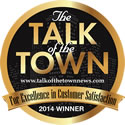We don’t spend much time reading Senate bills. But sometimes, they tell a story, or are part of a story that’s relevant to our lives and our work. SB350 is one of those.
SB350 is called the Clean Energy and Pollution Reduction Act of 2015. It was signed by our governor on October 7th of this year. Here’s what you need to know about it – at least so far.
The stated purpose of the bill is to create jobs, grow the state’s economy, and improve public health by setting new standards for California’s Renewable Portfolio Standard (RPS), and increasing energy efficiency in existing buildings.
The original bill contained three parts. Two parts were signed into law; the third part, an attempt to legislate up to a 50% reduction in gasoline use by 2030, was derailed by the oil industry in the final week of the legislative session.
Let’s talk about the other two parts.
One has to do with keeping the ball rolling in the shift to renewable energy resources such as solar and wind. As real estate professionals, there are two things to keep an eye on:
Net metering. Currently, when your home generates more energy than you can use, power is fed back into the grid and your power utility pays you for it – at the retail rate. Utilities would rather pay you at wholesale and are working hard to change the rules.
Private power companies. When solar companies lease panels to homeowners, they get the electricity. They are aggregating this power to become, in essence, private utility companies. They stand to profit.
These two movements, coupled with SB350, are changing the playing field for solar businesses – and changing the ROI on solar investments for homeowners.
 The other part of SB350 mandates the improvement of the energy efficiency of buildings. Although most attention has been focused on commercial buildings so far, the shift to attention on residential buildings is well underway. Here’s what to watch for:
The other part of SB350 mandates the improvement of the energy efficiency of buildings. Although most attention has been focused on commercial buildings so far, the shift to attention on residential buildings is well underway. Here’s what to watch for:
Zero energy. It’s clearly possible to build houses that generate as much energy as they use. Smart homes. The movement towards zero energy homes is no longer an alternative idea – it’s being pushed by the Department of Energy in Washington as well as forward-thinking state agencies.
Building science. The first goal of zero energy is to build a tight shell – one that doesn’t leak cool air in the summer and warm air in the winter. This changes the way buildings are effected by moisture. It also means handling the air in different ways to make sure it’s healthy as well as comfortable. Building science is changing the way homes are designed and built. High-end architects and builders are getting on board. Look for building science to push the building industry to higher levels of sophistication and competency.
Homeowner behavior. Having an energy-efficient home and appliances is only half the equation; the other half is how consumers run their homes. Software that monitors smart meters is becoming accessible. Homeowners can see, in real time, the effect their decisions make. A graph on their cellphone can show a spike when they turn on a hair dryer and they can see exactly what it will cost. This information will allow users to be smarter – like their homes! It will also allow contractors to monitor the homes they’ve worked on to see – and demonstrate – the effectiveness of their work.
So, what are we doing about all this?
• We’re working to get green home characteristics included in MLS listings. This is one energy-related area California is not leading the nation.
• We include a basic energy evaluation in every home inspection.
• We do complete energy assessments and help home buyers, homeowners, contractors, and lenders access and leverage a growing array of financial tools to help pay for energy upgrades.
• We work with Realtors to help them understand all this energy stuff and how to make sense out of it for their business and for their clients.
We’re also upgrading our website to include a brief form homeowners can fill out that will tell us quickly what directions they might want to consider towards maximizing their comfort and reducing their energy bills. We follow up with a brief phone conversation to help them understand their options and point them in the right directions. Would you please go online and try it – we’d love to hear from you!







Recent Comments